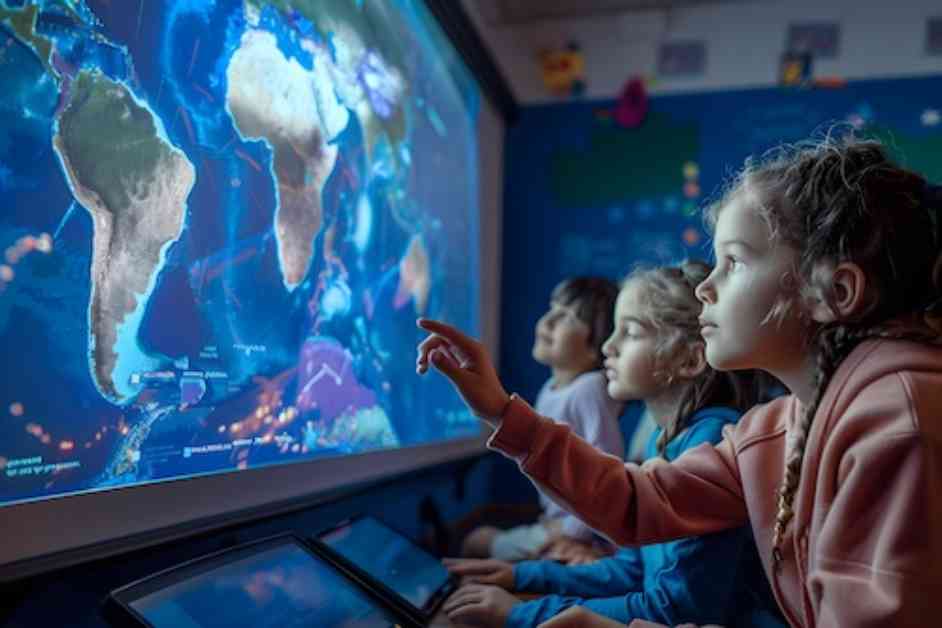As educators gear up for the new school year, there are five key priorities that will shape their focus in the 2024-2025 academic year. These priorities encompass a range of areas, from student well-being to career readiness, AI integration, personalized learning, and STEM skills development. Let’s delve into each of these key areas to understand how educators are adapting to meet the evolving needs of their students.
1. Student Achievement and Well-being
One of the top priorities for educators in the upcoming school year is the holistic well-being of their students. Dr. Shari L. Camhi, Superintendent of Schools at Baldwin School District, emphasizes the importance of educating the “whole child” by providing support services that extend beyond the traditional classroom setting. In Baldwin School District, efforts to enhance emotional wellness through the Wellness Center are aimed at helping students succeed not only in school but also in life.
Jonah M. Schenker, District Superintendent at Ulster BOCES, highlights the need for a reflective approach to improving student engagement and achievement. By focusing on how students show up in their learning experiences—engaging with complex problems, interacting with peers, and connecting with adults—educators can create meaningful learning environments that foster critical thinking and active participation.
2. CTE and Career Readiness
Career and Technical Education (CTE) plays a crucial role in preparing students for future careers. Stefany Gurgel, an NC3 Master Instructor at Festo and Instructor at Jewish Leadership Academy, underscores the importance of exposing students to industry equipment and certifications to inspire and equip them for their career paths. By integrating industry trends into the curriculum and providing hands-on training with state-of-the-art equipment, educators can create engaging learning environments that equip students with essential skills for success.
Dr. Shari L. Camhi emphasizes the significance of creating industry partnerships and new opportunities for students to explore high-demand fields. By focusing on career readiness and offering relevant learning experiences, educators can empower students to make informed decisions about their future paths.
3. AI in K-12 Learning
The integration of artificial intelligence (AI) in K-12 education is becoming increasingly prevalent, offering new teaching and learning opportunities. David Baker, Professional Development Coordinator at St. Vrain Valley School District, highlights the importance of providing teachers with resources and strategies to enhance their understanding of AI tools. Through platforms like AI Coach, educators can receive personalized coaching and support to strengthen their instructional practices and engage students more effectively.
Tim Needles, Technology Integration Specialist at Smithtown Central School District, acknowledges the potential of AI in personalized student tutoring and emphasizes the importance of maintaining a balance between technology and human connection. As AI continues to evolve in education, educators are exploring innovative ways to enhance student learning experiences and foster creativity in the classroom.
4. Personalized Hands-on Learning
Personalization of learning experiences is a key focus for educators in the new school year. Lisa Irey, Director of Technology at Des Moines Public Schools, highlights the implementation of interactive projection technology to engage students and personalize their learning. By incorporating technology that allows students to interact with content and collaborate with peers, educators can create dynamic and personalized learning environments.
Nate Moore, Executive Director of Technology at Kearsley Community Schools, emphasizes the importance of balancing technology with hands-on activities to promote student engagement and collaboration. By moving away from strictly virtual content and incorporating interactive tools, educators can create a more interactive and engaging learning experience for students.
5. STEM Skills Development
STEM skills development remains a priority for educators as they prepare students for future careers in science, technology, engineering, and mathematics. Josh Underwood, Physics and Aviation Teacher at Mason County High School, highlights the value of hands-on activities like building powered paper airplanes to teach STEM concepts and foster collaboration skills. By incorporating technology elements into hands-on activities, educators can enhance student learning experiences and promote STEM-related skills.
Diane M. Vrobel, Science Teacher at Archbishop Hoban High School, emphasizes the use of probeware to enhance student engagement and learning in STEM classrooms. By enabling students to conduct real-time experiments and analyze data, probeware offers a practical approach to teaching science and technology, helping students develop important scientific skills and explore complex phenomena.
In conclusion, the new school year brings a host of priorities for educators, from student well-being and career readiness to AI integration, personalized learning, and STEM skills development. By focusing on these key areas, educators can create engaging, relevant, and supportive learning environments that prepare students for success in an ever-evolving world.

